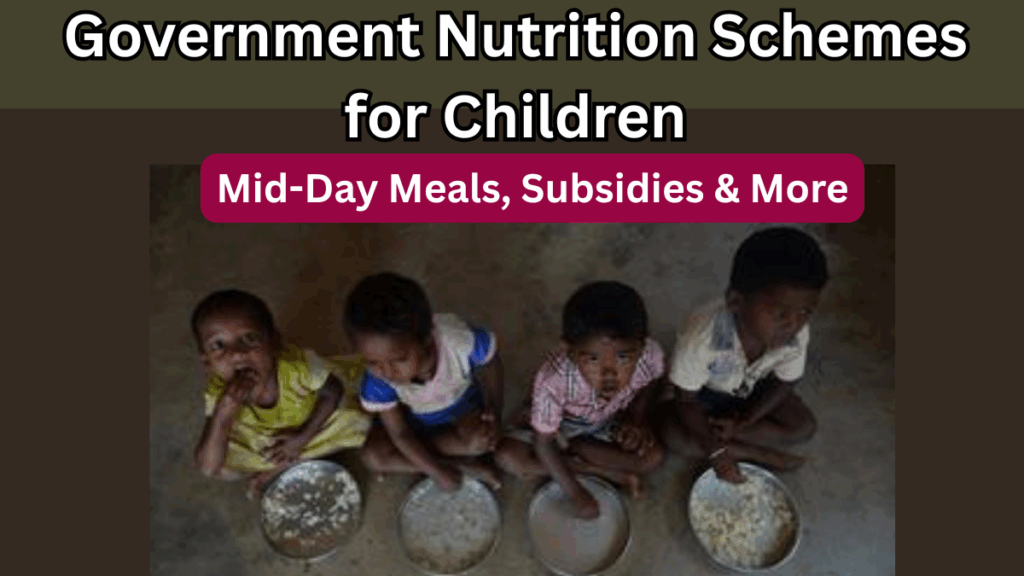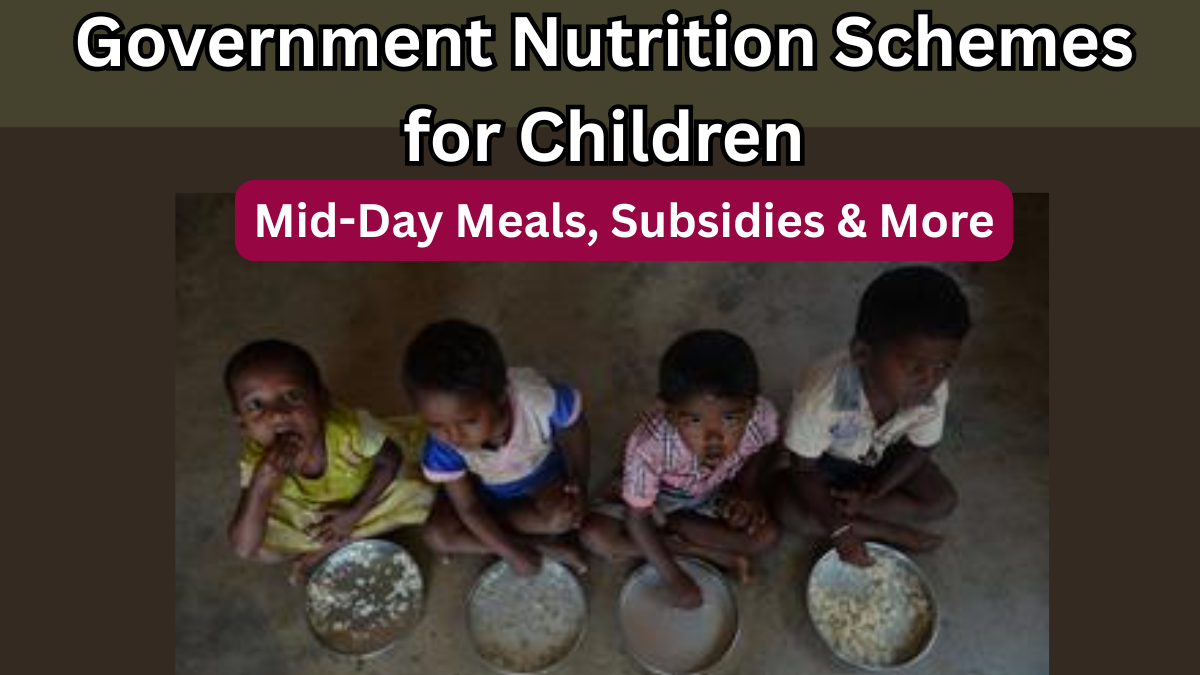Proper nutrition during childhood lays the foundation for a healthy, productive future. In India, the government has been working tirelessly to improve children’s nutrition through a variety of initiatives. In 2025, several Govt Schemes for Nutrition have been updated to meet the needs of growing children, especially those from low-income families.
Let’s explore the key programs – including the Mid-Day Meal Program Update, subsidies, and other schemes – that aim to ensure no child goes hungry.

Why Are Government Nutrition Schemes Important?
Children need access to nutritious food for:
-
Proper growth and development
-
Better learning outcomes in schools
-
Reducing malnutrition and anemia
-
Improved immunity to fight illnesses
With a large percentage of children in India still at risk of malnutrition, these schemes serve as a lifeline for millions.
Major Government Nutrition Schemes for Children in 2025
Here’s an overview of key Govt Schemes for Nutrition designed to support children:
Mid-Day Meal Program Update
The Mid-Day Meal Program remains one of the most impactful nutrition schemes for school-going children.
What’s New in 2025?
-
Enhanced meal quality with fortified rice, pulses, and vegetables
-
Special nutrition plans for children with disabilities
-
Digital attendance tracking to ensure food reaches every child
-
Regular health check-ups integrated into the program
Beneficiaries:
-
Students from primary and upper primary schools across government and government-aided institutions
Poshan Abhiyaan (Nutrition Mission)
This mission focuses on reducing stunting, wasting, and anemia in children.
2025 Highlights:
-
Integration of growth monitoring devices at Anganwadi centers
-
Counseling sessions for parents on balanced nutrition
-
Special awareness drives in rural and tribal areas
Integrated Child Development Services (ICDS)
ICDS provides a range of services through Anganwadi centers, including:
-
Supplementary nutrition
-
Health check-ups and immunization
-
Preschool education
2025 Update:
-
Inclusion of ready-to-eat fortified food for children under 6 years
-
Mobile Anganwadi vans to reach remote villages
PM POSHAN Scheme
An extension of the Mid-Day Meal Program with an added focus on nutrition education for children.
What’s New:
-
Community kitchens in urban slums
-
Monthly nutrition assessments for schoolchildren
Vertical Table: Key Schemes & Their Features
| Scheme | Target Group | Key Features (2025) |
|---|---|---|
| Mid-Day Meal Program Update | Primary & upper primary students | Fortified meals, health check-ups, digital tracking |
| Poshan Abhiyaan | Children under 6, adolescent girls | Growth monitoring, awareness sessions |
| ICDS | Children under 6 & mothers | Supplementary nutrition, preschool education |
| PM POSHAN | School-going children | Nutrition education, community kitchens |
Impact of These Schemes
-
Reduction in classroom hunger – More children are staying in school
-
Improved health indicators – Lower rates of malnutrition and anemia
-
Community involvement – Parents and local groups participate in monitoring
FAQs
Q1. What is the biggest update in the Mid-Day Meal Program in 2025?
The Mid-Day Meal Program Update now includes fortified meals, digital attendance tracking, and integrated health check-ups for children.
Q2. How do Govt Schemes for Nutrition help rural children?
These schemes ensure access to healthy meals, health check-ups, and education on nutrition, especially for children in remote and underserved areas.
Q3. Are these nutrition schemes only for school-going children?
No. While the Mid-Day Meal Program focuses on schoolchildren, schemes like ICDS and Poshan Abhiyaan cover preschoolers and even mothers.
Q4. How can parents contribute to these nutrition programs?
Parents can participate in awareness sessions, help monitor meal quality, and collaborate with Anganwadi and school committees to ensure effective implementation.
Click here to learn more
